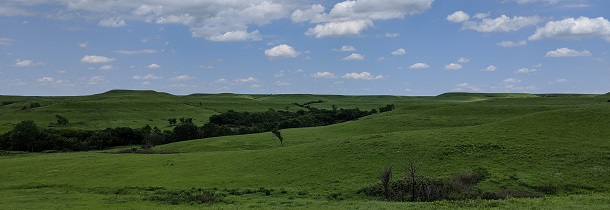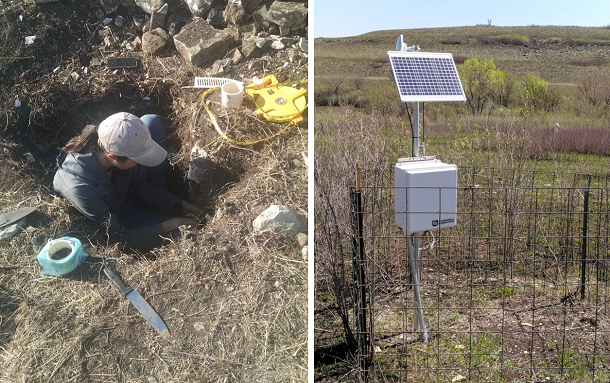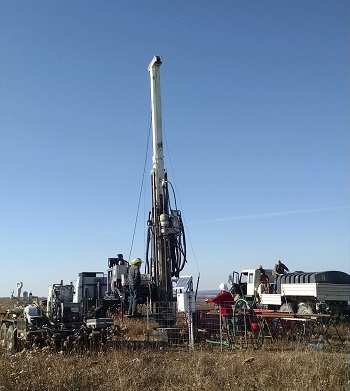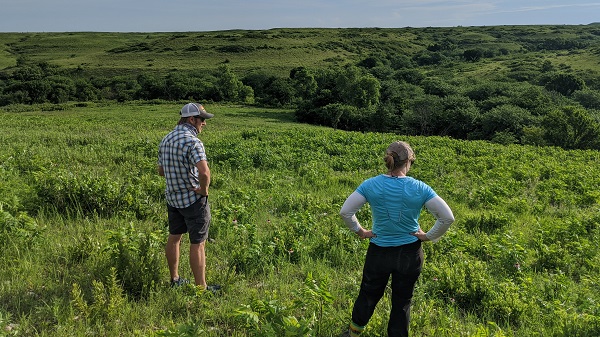Grassland Ecohydrology
This research focuses on how the global phenomenon of woody-encroachment impacts grassland ecohydrology. Broadly, we ask the question how and to what degree have human activities (e.g., fire suppression) altered the structure and functioning of the Earth's surface (e.g., plant species dominance) and subsurface (e.g., soil and rocks)? To address this question, we are collecting data at the Konza Prairie, where long-term burning regime experiments across 57 watersheds has resulted in the encroachment of woody vegetation. Woody vegetation cover now exceeds 60% in some catchments, where fire return intervals are four years or greater.

The Konza Prairie is an experimental landscape with varying fire frequences and grazing manipulations.
Our goals are to: 1) determine if the response of deepening root system architecture to climatic and human activities alters soil macropore distribution and subsurface water partitioning (i.e., interflow vs. groundwater flow) resulting in “older” catchment and storage age; 2) evaluate if these shifts in hydrologic processes increase biogeochemical fluxes by primarily influencing rates of transport, and secondarily influencing the rate of chemical transformations; 3) quantify if deeper roots will enhance transport of water and carbon to greater depths, and deepen the subsurface reaction front.

We have spent time digging soil pits at topslope hillslope and summit on 1-yr and 4-yr watersheds. In each pit, we sampled roots by depth (here, Rachel sampling roots), soils for physical and chemical characterization, and installed soil moisture, O2, CO2, and matric potential sensors.
Our work advances the fields of hydrologic sciences and geochemistry by integrating often-disconnected studies of water paths, storage, and age in hydrology to chemical weathering in geochemistry. By putting different lines of observations and models side-by-side, our work will reveal the interconnection, coupling, and the feedbacks between ecology (plants), hydrology (water) and geochemistry (chemical weathering). Understanding such connections and non-linear feedbacks is particularly important as we confront the need to forecast earth system evolution in the face of accelerating climate change and human perturbations.

Groundwater wells were installed at all topographic positions in 2021 in the 1-year burn watershed. These wells were previously established in the 4-yr watershed. The regular collection of groundwater samples allows for comparative characterization of ground water chemistry as a function of landscape position and burn treatment. The complex layering of limestone and mudstone results in perched aquifers and varying depths to groundwater.
Project supported by NSF-GEO:
Project PI's:
Dr. Pam Sullivan (Oregon State University),
Dr. Li Li (Pennsylvania State University),
Dr. Jesse Nippert (Kansas State University)
Project Graduate Students:
Victoria Moreno (Oregon State),
Kayal Sadayappan (Penn State),
Rachel Keen (Kansas State University)

Pam and Jesse determining that indeed, there are a lot of woody plants on the landscape